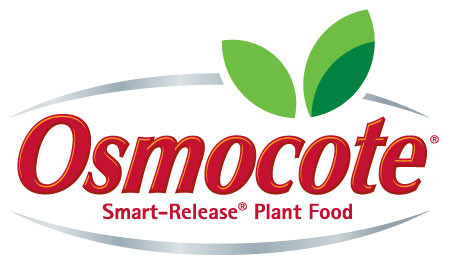Well, the holidays are over. There is
not much that can be done in the yard right now. But as a gardener it
is an exciting time!
SEED CATALOG SEASON!!
As you can see by this picture, I get a
bunch of them.
This is just what has come in so far, I
am pretty sure there are still a few missing.
How many of you gardeners out there do
not just sit and drool over the pictures of ripe tomatoes, pretty
peppers, and golden ears of corn?
Granted, there is a bunch of crossover.
Most of the catalogs sell the same varieties. I will go through them
and order what I want from the one(s) that have what I want the
cheapest.
WHY do I receive so many? Especially
when they all pretty much sell the same things?
The wise crack answer is, “because I
can”.
The true answer is, because each one
will have a couple of “exclusive” or “unusual” varieties that
the others don't.
However, today's article is not about
what I am going to order (not sure yet anyway). No, today I am going
to try to help some of the newbies to gardening. The ones that want
to join us in the dark side and grow their own veggies.
All those catalogs look inviting. The
pictures look great. The seeds are reasonably priced. It is almost
too much to tolerate, I want to plant now!!
Wait a minute. I don't understand some
of the terminology being used. Determinate/Indeterminate? Are they
not sure of themselves?
Those letters after the name: VFFNTA.
Are they trying to learn their alphabet?
Good questions. What in the world are
these companies trying to tell you?
Most of this terminology is used for
Tomatoes, though the letters can be also relate to Peppers. I will be
sticking with Tomatoes today.
Determinate and Indeterminate first.
The majority of Tomatoes you will see,
probably 90%, will be indeterminate. These are usually considered a
vining type. They can reach lengths, or heights if staked up, of 6-10
feet. It also means, if they are well taken care of, they will
continue to grow, flower and set fruit until the frost kills them.
The fruit (yes, it is botanically a fruit) will ripen over a long
period of time. If you LOVE a good old Tomato sandwich or like a
little 'mater in your salad, these are the types you should look for.
Determinate Tomatoes are more commonly
known as "bush" Tomatoes. These Tomato varieties are
compact and generally grow to a height of about 3-4 feet. Determinate
Tomatoes will actually stop growing when the top bud of the plant
sets fruit. All of their crop will ripen near the same time over a
period of 1-2 weeks and then the plant, having completed its life
cycle, will begin to die. Determinate Tomatoes are good candidates
for growing in a container. Those aluminum tomato cages you buy at
the garden center are designed to support these kinds of plants. If
you like to can your own Tomato sauce or make salsa, you need to grow
these kinds.
Now for the alphabetically challenged
ones.
All of those letters tell you that
particular plant has been bred to resist some kind of disease or
other problem.
Let's tackle a few of the big ones.
“V” Which is for Verticillium wilt.
This is a disease caused by the fungus, Verticillium
albo-atrum, which lives in the soil. It is often confused with
fusarium wilt, bacterial canker, or early blight. Symptoms are
similar in all these diseases. The fungus works its way up through
the plant’s roots spreading a toxin that wilts and creates spots on
the leaves. It prevents water from reaching the branches and leaves,
thus starving the plant.
Some things to look for include: Yellow
spots appearing on the lower leaves, followed by brown veins. Leaves
then turn brown and fall off. Plants may wilt during the day and
recover at night. If you were to split the main stem it shows
discolored streaks about 10-12 inches above the soil line. It can
attack at any stage in a Tomato plant’s growth, but is most common
when the plant is producing fruit. To date, there is no chemical
treatment available.
“F” This one stands for Fusarium
wilt. This disease is caused by the fungus, Fusarium
oxysporum f. sp. Lycopersici, which also lives in the
soil. It is often confused with Verticillium wilt because both
produce similar symptoms in Tomatoes. One of the main differences of
these two diseases is, the first signs are yellowing and wilting on only
one side of the plant – a leaf, single shoot, branch, or several
branches. Yellowing and wilting spread throughout the plant as the
fungus spreads. There is no chemical control for this one either.
Fusarium Wilt Virus
If you see two FF's, that particular
plant is resistant to two different strains of the Fusarium virus.
“N” Nematodes. Better known as
Root-knot nematodes, which are microscopic worms that live in the soil
and in plant roots. In a resistant variety, Nematodes fail to develop
and reproduce normally within the root tissues, allowing plants to
grow and produce fruit even though nematode infection of the roots
has occurred . Some crop yield loss may still happen however, even
though the plants are damaged less and are significantly more
tolerant than that of a susceptible variety.
“T” This letter is for the Tobacco
Mosaic Virus. This disease can
be a problem when resistant varieties are not used and frequent
handling of plants is involved. Many strains of the virus exist,
affecting many unrelated plants in different families. Handling
plants often such as transplanting, staking them up, and pruning can
effectively spread the virus. Infected leaf and root debris as well
as seeds are common sources of the virus The virus can survive in the
plant debris for varying periods, up to 2 years under dry conditions.
This is why it is important if you are a smoker to make sure you
wash your hands very well before handling your Tomato plants, it can
actually remain in your cigarettes and be transmitted that way.
Symptoms
first appear about 10 days after plants become infected. Symptoms
appear as light and dark green mottled areas on leaves. Leaves on
infected plants are often small, curled, and puckered. Plants
infected early in their development are stunted and have a yellowish
cast. Symptoms may vary depending on virus strain, time of infection,
variety, and environmental conditions. The virus can
reduce size and number of fruit produced. The earlier a plant becomes
infected, the greater the loss.
“A”
The last one I will cover today is Alternaria Leaf Spot also known as
Early Blight. This is caused by various fungi in the Alternaria
family. Lesions are round to irregular spots on older leaves. Spots
enlarge and concentric rings in a bull's-eye pattern can be seen in
the center of the diseased area. It is best to use a variety that has
been bred to resist this disease, but if it is severe enough to
warrant chemical control, select one of the following fungicides:
maneb, mancozeb, chlorothalonil, or copper fungicides. Follow the
directions on the label, this is the law!
There
are many other diseases that affect Tomatoes. This list is just some
of the things that have been bred into them to help resist the
problem. As you can see, finding one that has some resistance to a certain disease could be very useful.
There
are also many cultural practices that you should be following already.
Things such as rotating crops. I know this is difficult if you have a
small area to garden in. Ideally you will want to plant things that
have no relation to what you planted the previous year. Avoid
planting Tomatoes in the same place as well as Potatoes and Peppers.
Corn or Beans would be a good alternate crop.
Sanitation.
This is a big one I have been harping on for a long time. Clean up
any fallen leaves or fruit. Especially if you think you might have
some kind of a disease problem. DO NOT compost. Destroy the debris
completely or remove them from the area.
Plant
in a well drained area. Make sure there is ample sunlight. Do not
plant too close together so they can have good air circulation.
Common sense is one of your biggest tools in your arsenal.
I
hope this has cleared up much of the confusion when you open up a
seed catalog. Once you know the lingo, it really is not hard to
understand. As always, if you have any questions, please feel free to
e-mail me. But for right now, I am going to take my leave of you, I
think I just heard the mailman and he might have another catalog for
me!
Happy
Growing!
Darren











No comments:
Post a Comment